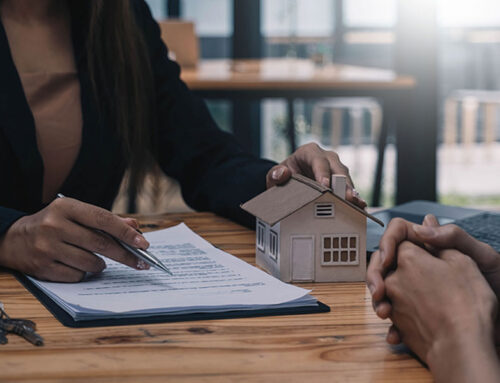I remember wondering how I could successfully invest in real estate at a young age. I mean, I had no experience and even less money. So, my solution was to put it off until I had both. And, much to my chagrin, that put me way behind the curve for far too long. Not pursuing my dream right out of college kept me pretty unhappy, too.
My nephew, Blake, on the other hand, is nothing like me when I was his age. He never doubted whether or not he should buy an investment property or how and when to do it. He just jumped right into a small fixer-upper, living there and making repairs while still in school. And, he did alright on the deal. Suffice it to say, I was impressed.
But, as his uncle and a long-time investor, I was also wary. I knew that when it came time to buy a second investment property, he might need more than a little luck and drive. That’s why I gave him my top tips for avoiding the potential pitfalls he could encounter so that he’d stay on track to build a strong career.
Tips for Successfully Buying a Second Investment Property
Unfortunately, some of the biggest mistakes in real estate investing seem to happen after you buy, rehab, and sell that first property. For example, if you experienced a good run of beginner’s luck on your first deal and walked away with a nice bit of green in your back pocket, you might think you’re invincible and not work so hard next time. Even if things didn’t go as planned, but still panned out in the end, it’s easy to convince yourself that you’ve got a knack for turning bad luck into good—or, that the current market is doing it for you.
Then there are investors like my nephew, Blake, who took his time and, technically, did everything right on his first deal. But, when you want to make a career of investing in real estate, you’ve got to get in and out of your fixers in a matter of months, not years, so that you can move on to the next one. And, that kind of pressure can trip you up if you don’t look where you’re going.
So, let’s make sure you avoid all the pitfalls you could potentially face when buying a second investment property, as well as a third, fourth, and fifth. Here’s how to do just that.
Tip #1: Create—and Follow—a Plan
If you did not create a real estate investment business plan before purchasing your first property, do it in advance of buying your second—and stick to it. In order to succeed in the long term as an investor, you have to know where you’re going and how you intend to get there. That means thinking critically about how much money you want to make, which market you’d like to invest in, where you’ll find the experts to help you, and when you expect to reach your goals.
Then, you have to write it all down and refer to it regularly. Otherwise, you’ll be flying by the seat of your pants and, at best, that only sets you up to follow the direction of others. At worst, it’ll cause you to make emotional choices about investments that could sabotage future opportunities. So, to make good decisions about investing in property every time so that you can build the career you want, plan for it now.
Tip #2: Offer the Right Price
Whether your first deal went off without a hitch or not, when it comes to buying the second make certain you offer at the right price. Unfortunately, realizing good returns on your first property can lull you into thinking you’ve got room to spend more on the second. But, pay too much and there will be no room at all for a decent rehab or even a modest ROI.
Conversely, if you took a big hit the first time out, your next effort at buying way below market could get your offer turned down. Then, you won’t be buying anything. Knowing the right price to offer is a balance that can be hard to strike. But, it’s better to learn how to do it early so that profits don’t get stricken from your books.
Tip #3: Run the rehab numbers.
Just as you, hopefully, did with your first deal, carefully run the rehab numbers on your second. Valuing residential investment property with a tool that correctly calculates repairs is the only way to keep expenditures under control—or to determine if you have a deal at all. Though the work that needs to be done from one house to the next may look similar, expect that it’ll price out differently.
Everything has an impact on rehab costs, from the age of a home to its size, design, and history. Repairing the plumbing in the bathroom of a house that’s sustained normal wear and tear won’t cost nearly as much as replacing all the pipes on a property that’s been neglected for years. And, it will almost certainly sink your bottom line to assume you can make a good guess.
Tip #4: Insure the Property
A lot of first-time investors don’t think to insure their properties. I’m guessing you didn’t spend the time or money to protect your investment property with the right coverage the first go around, either. It’s common, but it should not be repeated.
All it takes is one act of vandalism or a bad storm that rips through the roof to push your rehab timeline back and put any potential returns on hold. If you’re not covered for these events, you’ll have a hard time recovering financially when they happen. It’s possible you won’t recover at all. So, don’t press your luck with your second investment—insure it to better ensure you’ll see your expected ROI.
Tip #5: Sell At the Right Price
When it comes time to sell your second investment property, set the right price for your market and your margin. If you bought at a good price and stayed within budget on your rehab, this shouldn’t be too hard. Though, it’s also easy to second-guess your numbers and ask for too little, or even too much, since you may not yet know the market like the back of your hand. Luckily, confidence in your skill set will grow as you gain more experience and so will your understanding of the local market. But, in the end, it’s still all about the numbers from your first property to your last. So, for the second house you sell, make it count by setting the right price—and setting the standard for future investments.
In looking back over these tips, they’re nearly identical to those I give when I’m offering first-time investment property advice. And, of course, they’re exactly the steps I’d want you to take every time you set out to buy, renovate, and resell a house. Luckily, they’re not hard to follow, either, especially once they become a habit. But, the best part is that, if you start your real estate investing company with the right team behind you, you’ll start off with good habits from day one.
A Better Team Can Help You Build Your Best Business
I’d like to say that when I finally got around to starting my career in real estate investing, I did alright. If I took my time getting in, then I probably made a few mistakes, right? Unfortunately, that’s wrong. Not only did I have trouble with my first deal, but I also had trouble when it came time to buy my second investment property, too. In fact, it wasn’t until I became an independently owned and operated HomeVestors® franchisee that I learned how to invest in property more wisely and avoid all the potential pitfalls more consistently.
But, great real estate investing training isn’t all I got. I also got access to every benefit that being a part of an established real estate investing franchise provides: a supportive team of regional franchisees, one-on-one mentoring from a seasoned Development Agent, and some of the best marketing tools and resources I’d need to generate qualified leads. And, of course, I also got access to HomeVestors® proprietary valuation software, ValueChek™, that has helped franchisees, like me and, now, Blake, successfully buy more than 140,000 houses since 1996. I tell you, it’s just a better way to build your business than going it alone—no matter how much gumption you’ve got.
Establish your real estate investing business faster by building it with the help of an already-established team. Contact HomeVestors® and start successfully buying more investment properties today!
Each franchise office is independently owned and operated.
Contact
"*" indicates required fields






